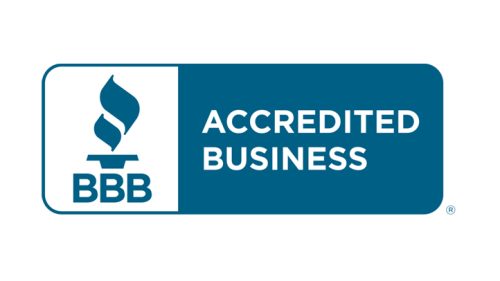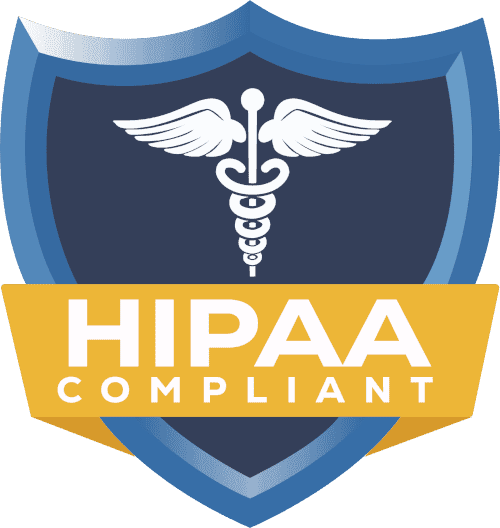How to Get Credentialed with Insurance: A Guide for Providers

Insurance credentialing is one of the most important steps that any healthcare giver should consider when intending to accept insurance. Be it a physician, nurse practitioner, therapist, or operating a new practice, you cannot bill insurance firms until you get credentialed with them. Many providers have overestimated the significance of this process. In the absence of credentialing, you will not receive any payments for the services you are providing to the insured patients. Credentialing is not all about making money. It gains credibility with the patients and insurance payers. Credentialing demonstrates your credentials, training, and licenses.
Having a provider who fulfils the requirements gives the patients a sense of security. Insurance companies are satisfied that you are up to their quality and compliance measures. After you have the right credentialing, you will be able to serve additional patients, widen your practice, and not have to wait before you receive your payment. This guideline defines the insurance credentialing process in stages. It also addresses the pitfalls, timelines, and advice to follow in order to make it easier. At the end, you will be informed of how to be credentialed with insurance panels, how CAQH functions, why Medicare and Medicaid enrollment are different, and how credentialing companies can assist.
What is Insurance Credentialing?
Insurance credentialing refers to the process that insurance firms use to confirm your professional background. They verify your education, training, licenses, certifications, malpractice insurance, work history, and other important information. When all goes well, they will take you on their list of trusted suppliers. When you have them in your network, you are able to view patients under that insurance cover and receive payment for your services. Many emerging providers often mix up credentialing and privileging. Hospitals or clinics typically have the privilege.
It is the procedure of giving you the authority to work in a given facility. Credentialing, conversely, concerns insurance companies. Every insurance payer that you desire to work with has to be credentialed. In the absence of insurance credentialing, you cannot make claims or get the payers to reimburse you. Your valid medical license does not open the door to billing insurance companies without passing through this process. That is the reason why all insurances that are to be accepted by all providers should be well-known.
Step-by-Step Guide to Insurance Credentialing
Credentialing with insurance is a process that requires planning, proper paperwork, and time. Lacking a single document would mean waiting weeks before approval. It can be done smoothly in the following way.
Step 1:
The first step is to prepare all the necessary documents, such as your medical licenses, malpractice insurance, DEA certificate (where necessary), board certifications, CV, education records, work history, and disclosure forms. You should not waste time getting everything ready first before you can start.
Step 2:
Next, create a CAQH profile. CAQH ProView is the focal database that numerous payers refer to and check the information about providers. Rather than submitting records to the individual insurers, you upload them to CAQH and create access, after which you testify to their authenticity. Register on the CAQH site, create your profile, upload genuine documents, and complete the attestation process so that insurers can access your information.
Step 3:
Following CAQH, request an NPI number in case you do not have one. This National Provider Identifier is needed in order to pay Medicare, Medicaid, and most private insurance. In case you want to bill Medicare, you have to enroll via PECOS, the Medicare provider enrollment system online. All states likewise possess their own Medicaid enrollment; therefore, confirm that need in case you are to accept Medicaid.
Step 4:
Next, place applications with the insurance panels of your choice. There are those insurers that depend on CAQH and some that require additional forms. Fill out every application form to the letter in order to prevent rejections or delays.
Step 5:
Follow up after submission. Most providers are wasting time due to waiting excessively. Quickly respond to any requests from insurers and maintain the records of all the applications and contacts.
Last step:
Lastly, as soon as you are accepted, you will get a letter or contract that will confirm that you are a member of the network. Check the effective date; do not begin billing before that date, or you will have your claims repudiated.
How Long Does Credentialing Take?
The process of insurance credentialing will not happen in a hurry. It usually takes between 90 and 120 days. Some payers are quicker, whereas others might take still longer based on their backlog or internal review procedures. A number of factors influence the schedule. Your application will be held back in case any of your documents have expired or are missing. In case your CAQH profile is not complete or your attestation has not been provided, you will not even have your application reviewed by the payers.
Multi-practice location or the presence of more than one insurance company at the same time may be a slowing factor, too, since there are more records to check. Some specialties involve extra verification measures, which may further prolong the schedule. And lastly, when the insurance companies have a high number of applications, the process may require more time than anticipated. That is why most providers initiate the credentialing process several months before making an entry into a new practice or a group.
Common Challenges and How to Avoid Delays
A significant number of providers encounter the same problems during credentialing. One of the issues is incomplete applications. Your approval can be postponed even by a small detail that is missing a page or signature. Always check twice before posting. The other issue is the inability to meet recredentialing deadlines. The majority of insurance companies recredit after every two or three years. Failure to meet the deadline will cause your contract to expire, and you will be forced to repeat the whole process.
Note down the dates of renewal to prevent breaks. The insurance firms also turn down applications due to minor mistakes, such as typing errors, inappropriate names, and wrong taxonomy codes. Expired malpractice certificates, the use of old licenses, or scans of documents of low quality can also be a problem. The main secret of evading such troubles is to remain well-organized, update all the documents, and go through each of them before filing.
Role of Insurance Credentialing Companies
Due to the time-consuming nature of the process, several providers seek the services of credentialing companies to undertake it on their behalf. Such companies understand precisely what every payer needs and can avoid typical errors that can slow down the approval. They also monitor due dates, paperwork, and communication with the insurance companies in order to allow providers to attend to patients. The credentialing process is usually shortened when it is outsourced since such companies present filled applications with no mistakes.
They also take care of recredentialing schedules such that providers do not miss the renewal date. In busy practices or solo providers that do not have dedicated administrative personnel, outsourcing may save a lot of time and effort. When selecting a credentialing company, ensure that they are experienced in your specialty, the number of payers that they cover, check whether they enroll in Medicare and Medicaid, and that they track deadlines. Get prices and schedules in advance to be informed.
Tips for a Smooth Credentialing Process
Begin credentialing earlier since it is easy to lag. Always update your CAQH profile. You should update your license, malpractice insurance, or practice location whenever there is a change in either. Enter precise taxonomy codes in accordance with your specialty. Regular malpractice coverage is necessary since the insurance firms need to see evidence of working insurance covers. Do not take any longer than necessary to respond to any requests made by payers, since unanswered questions may freeze your application for weeks.
Remember to document every application, the date, the contacts, and approval letters so that you can easily track them in case they are required. Lastly, recredentialing should be planned long in advance. There are a lot of providers who do not remember about it until they get a forgotten message. The failure to meet the recredentialing deadline may disrupt your insurance network activities and interfere with your cash flow.
Conclusion
To gain access to insurance payments, gain patient trust, and develop their practices, providers have to be credentialed. It can be perceived as a complicated process at the very beginning. Still, by bringing together all your documents, developing a complete CAQH profile, registering with Medicare and Medicaid (where necessary), and filing proper applications to insurance panels, the process can go without any hitches. The secrets of avoiding delays are to remain in order, observe deadlines, and keep in touch with payers. In case the process is overwhelming, saving time and relieving administrative stress may be done by outsourcing services to a credentialing company.
With credentialing, the providers also receive fewer payment delays and are able to focus on the most important thing to provide quality care to their patients. Credex Healthcare can assist with CAQH setup, Medicare and Medicaid enrollment, payer applications, or recredentialing. Our team assists providers with obtaining credentialing quicker in order to begin treating patients and earning remuneration without unjustified delays. Begin your insurance credentialing efforts today and become a payer panel quicker. Credex Healthcare will do CAQH setup, Medicare and Medicaid enrollment, payer applications, and recredentialing in place of patient care. Get in touch with us so that we can make credentialing easier and begin to receive payments in a shorter time.
FAQs
What are the insurance credentialing documents?
You must have your medical/professional licenses, board certifications, malpractice insurance, DEA certificate (where applicable), education and training documentation, and a detailed CV of your job history.
What is the cost of insurance credentialing?
Many payers do not charge application fees, but some do. Contracting the services of a credentialing company will incur costs. The CAQH profile is free of charge on its own.
Can the providers be credentialed with more than one insurance company?
No, there are multiple payers where you can apply. All the payers will individually examine your application.
What is your frequency of recredential?
The majority of the insurance companies recredential at least once every two or three years. Medicare and Medicaid are also periodically revalidated.
Are there any behavioral health providers that the credentialing companies deal with?
Yes, the majority of the credentialing services deal with behavioral health, primary care, specialists, and other types of providers.



















